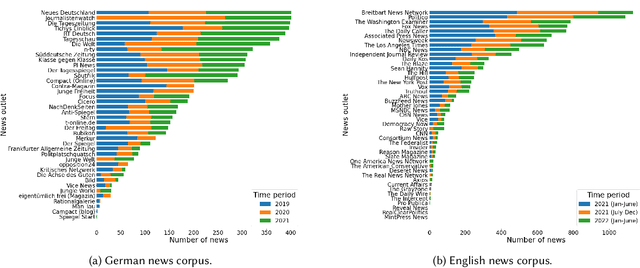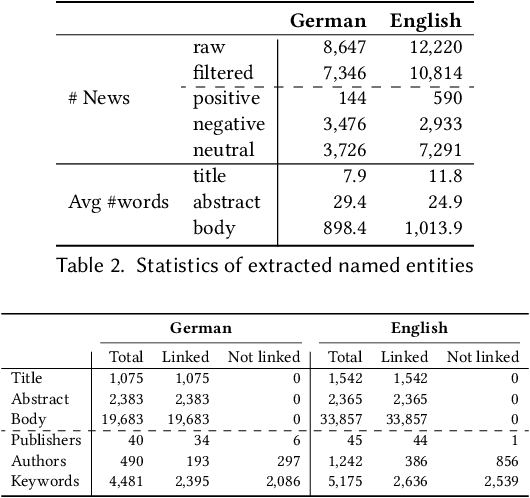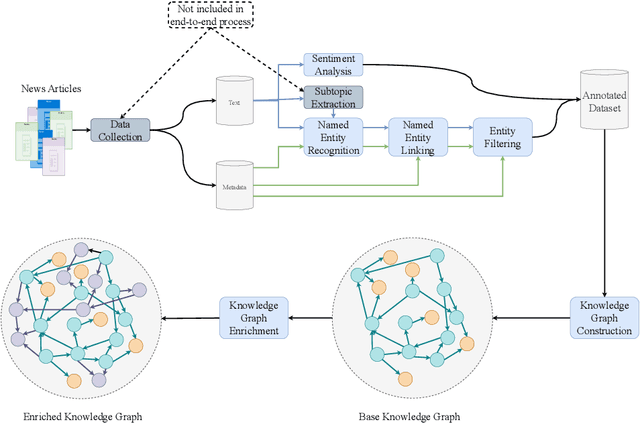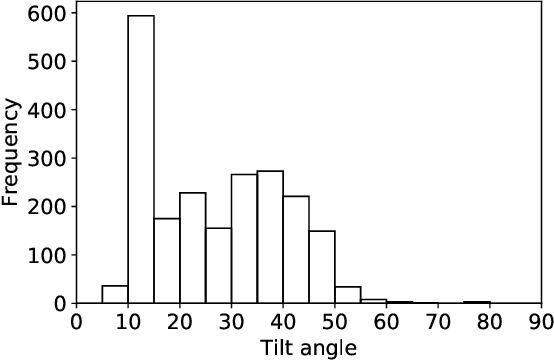Christof Weinhardt
NeMig -- A Bilingual News Collection and Knowledge Graph about Migration
Sep 01, 2023



Abstract:News recommendation plays a critical role in shaping the public's worldviews through the way in which it filters and disseminates information about different topics. Given the crucial impact that media plays in opinion formation, especially for sensitive topics, understanding the effects of personalized recommendation beyond accuracy has become essential in today's digital society. In this work, we present NeMig, a bilingual news collection on the topic of migration, and corresponding rich user data. In comparison to existing news recommendation datasets, which comprise a large variety of monolingual news, NeMig covers articles on a single controversial topic, published in both Germany and the US. We annotate the sentiment polarization of the articles and the political leanings of the media outlets, in addition to extracting subtopics and named entities disambiguated through Wikidata. These features can be used to analyze the effects of algorithmic news curation beyond accuracy-based performance, such as recommender biases and the creation of filter bubbles. We construct domain-specific knowledge graphs from the news text and metadata, thus encoding knowledge-level connections between articles. Importantly, while existing datasets include only click behavior, we collect user socio-demographic and political information in addition to explicit click feedback. We demonstrate the utility of NeMig through experiments on the tasks of news recommenders benchmarking, analysis of biases in recommenders, and news trends analysis. NeMig aims to provide a useful resource for the news recommendation community and to foster interdisciplinary research into the multidimensional effects of algorithmic news curation.
An Enriched Automated PV Registry: Combining Image Recognition and 3D Building Data
Dec 07, 2020



Abstract:While photovoltaic (PV) systems are installed at an unprecedented rate, reliable information on an installation level remains scarce. As a result, automatically created PV registries are a timely contribution to optimize grid planning and operations. This paper demonstrates how aerial imagery and three-dimensional building data can be combined to create an address-level PV registry, specifying area, tilt, and orientation angles. We demonstrate the benefits of this approach for PV capacity estimation. In addition, this work presents, for the first time, a comparison between automated and officially-created PV registries. Our results indicate that our enriched automated registry proves to be useful to validate, update, and complement official registries.
 Add to Chrome
Add to Chrome Add to Firefox
Add to Firefox Add to Edge
Add to Edge